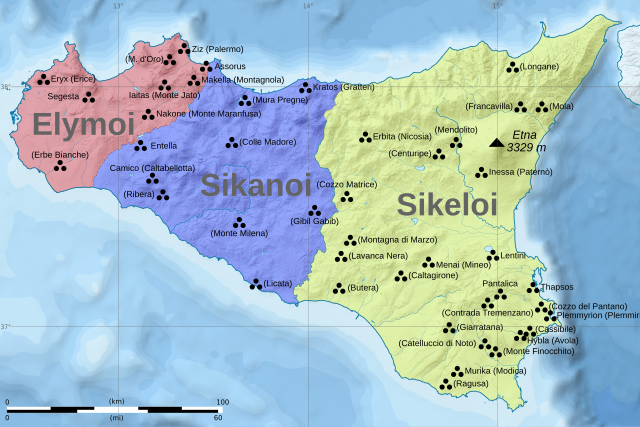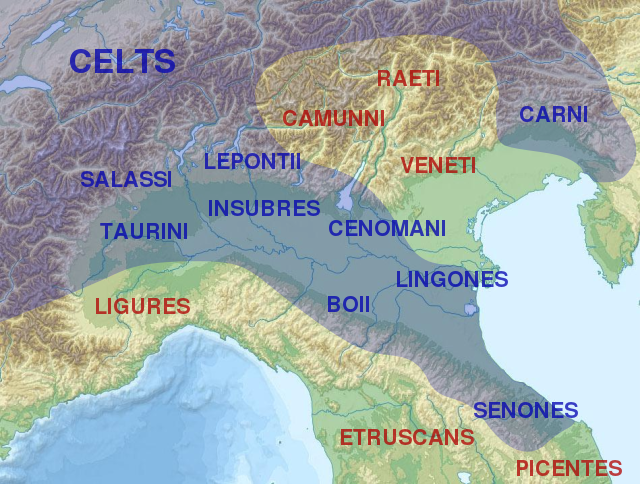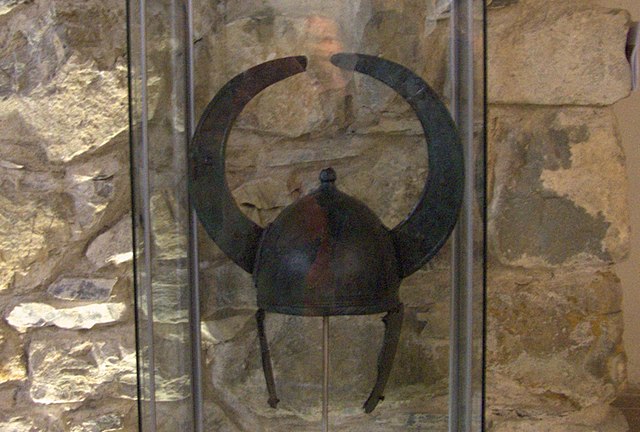Top Qs
Timeline
Chat
Perspective
List of ancient peoples of Italy
From Wikipedia, the free encyclopedia
Remove ads
This list of ancient peoples living in Italy summarises the many different Italian populations that existed in antiquity. Among them, the Romans succeeded in Romanizing the entire Italian peninsula following the Roman expansion in Italy, which provides the time-window in which most of the names of the remaining ancient Italian peoples first appear in existing written documentation. Many names are exonyms assigned by the ancient writers of works in ancient Greek and Latin, while others are scholarly inventions.

Nearly all of these peoples and tribes spoke Indo-European languages: Italics, Celts, Ancient Greeks, and tribes likely occupying various intermediate positions between these language groups. On the other hand, some Italian peoples (such as the Rhaetians, Camuni, Etruscans) likely spoke non- or pre-Indo-European languages. In addition, peoples speaking languages of the Afro-Asiatic family, specifically the largely Semitic Phoenicians and Carthaginians, settled and colonized parts of western and southern Sardinia and western Sicily.[1]
Remove ads
Speakers of non-Indo-European languages
Summarize
Perspective

Scholars believe - though sometimes on the basis of scanty evidence - that the following peoples spoke non-Indo-European languages. Some of them were Pre-Indo-Europeans or Paleo-Europeans while, with regard to some others, Giacomo Devoto proposed the definition of Peri-Indo-European (i.e. everything that has hybrid characters between Indo-European and non-Indo-European).[2]
Sardinians
Tyrrhenians
The Tyrrhenians were the Etruscans and their linguistic relatives.
- Etruscans - Centered in Etruria with later influences stretching from the Po Valley to Campania.[9][10][11][12][13][14]
- Raeti[15]
- Camunni[16]



Others (classification uncertain)
Remove ads
Speakers of Indo-European languages
Summarize
Perspective
Italo-Celtic
Italic and Celtic languages are commonly grouped together on the basis of features shared by these two branches and no others. This could imply that they are descended from a common ancestor and/or Proto-Celtic and Proto-Italic developed in close proximity over a long period of time.
Italic
Speakers of Italic languages included:
- Latino-Faliscans[22]
- Latins- centered around the central plain of Italy between the Tiber and the Alban Hills.
- Romans- centered in the city of Rome.
- Falisci
- Latins- centered around the central plain of Italy between the Tiber and the Alban Hills.

- Sicels[23]
- Adriatic Veneti - centered in an area corresponding to the modern-day region of Veneto.[24]
- Umbri[25] - Centered in central Italy stretching from the Adriatic coast to the upper Tiber.
- Sabines - Centered north of Rome and by the river Tiber.
- Marsi - Centered around Lake Fucinus
- Volsci - Centered on the Pontine plain
- South Picenes
- Marrucini


- Oscans - Centered in the part of Italy towards Tyrrhenia".[26]
- Opici
- Aurunci/Ausones
- Sidicini
- Campanians - Centered in the region of Naples
- Mamertines
- Paeligni
- Frentani - Centered on the southern Adriatic coast.
- Samnites - Centered in central Italy, south-east of Rome north-east of Capua.
- Lucani - Centered on the south-western coast of Italy.
- Opici
- Oenotri
- Others
Celts
The Celts of the Italian peninsula included,
- Cisalpine Gauls - Centered in the area south of Lepontii.[31][32]

Ligures

The Ligures, who may have spoken Pre-Indo-European[35] or an Indo-European language,[36] were:
Greeks

Sometimes referred in ancient sources as Pelasgi,[37] the Ancient Greeks of the Italian peninsula included,

Others (classification uncertain)
- Iapygians or Apulians (possibly related to Illyrians) - Centered in an area corresponding to the modern-day region of Apulia.[38]
- Elymians, who inhabited the western part of Sicily during the Bronze Age and Classical antiquity.[39][40]
Remove ads
Prehistoric archeological cultures
Summarize
Perspective
The specific identities or names of the tribes or groups of peoples that practiced these pre-Roman archeological cultures are mostly unknown. The posited existence of these archeological cultures is based on archeological assemblages of artifacts that share common traits and are found within a certain region and originate within a certain prehistoric period. Therefore, many of these archeological cultures may not necessarily correspond to a specific group of ancient people and, in fact, may have been shared among various groups of ancient peoples. The extent to which an archeological culture is representative of a particular cohesive ancient group of people is open for debate; many of these cultures may be the product of a single ancient Italian tribe or civilization (e.g. Latial culture), while others may have been spread among different groups of ancient Italian peoples and even outside of Italy. For example, Latial culture is believed to be the product specifically of the Ancient Latin tribe; the Canegrate culture and Golasecca culture have been associated with various ancient proto-Celtic, Celtic and Ligure tribes including the Lepontii, Orobii, and Insubres, while other archeological cultures may have been present among multiple groups throughout and beyond the Italian peninsula.

Neolithic
- Pre-Nuragic Sardinia
- Cardial Culture
- Grotta Verde culture
- Filiestru culture
- Bonu Ighinu culture
- San Ciriaco culture
- Arzachena culture
- Ozieri culture
- Gaudo culture
Copper Age
- Pre-Nuragic Sardinia
- Beaker culture
- Remedello culture
- Rinaldone culture
- Laterza culture
- Gaudo culture
- Conelle-Ortucchio culture
- Serraferlicchio culture
- Spilamberto group
Bronze Age


Iron Age
Remove ads
Genetics

A genetic study published in Science in November 2019 examined the remains of six Latin males buried near Rome between 900 BC and 200 BC. They carried the paternal haplogroups R-M269, T-L208, R-311, R-PF7589 and R-P312 (two samples), and the maternal haplogroups H1aj1a, T2c1f, H2a, U4a1a, H11a and H10. A female from the preceding Proto-Villanovan culture carried the maternal haplogroups U5a2b.[41] These examined individuals were distinguished from preceding populations of Italy by the presence of ca. 25-35% steppe ancestry.[42] Overall, the genetic differentiation between the Latins, Etruscans and the preceding proto-villanovan population of Italy was found to be insignificant.[43]
Remove ads
See also
- Prehistoric Italy
- Genetic history of Italy
- List of ancient Italic peoples
- List of Nuragic tribes
- History of Italy
- History of the Mediterranean region
- Etruscan civilization
- Pre-Nuragic Sardinia
- Nuragic civilization
- Latins (Italic tribe)
- Prehistory of Corsica
- Prehistory of Malta
- History of Sardinia
- History of Sicily
- List of Celtic tribes
- List of ancient Germanic peoples
- List of ancient Greek tribes
- List of ancient Iranian peoples
- Italo-Celtic
- Magna Graecia
- Rock Drawings in Valcamonica
- Osco-Umbrian languages
- Roman Kingdom
- Founding of Rome
- Aeneid
- Old Latium
Remove ads
References
Bibliography
External links
Wikiwand - on
Seamless Wikipedia browsing. On steroids.
Remove ads
